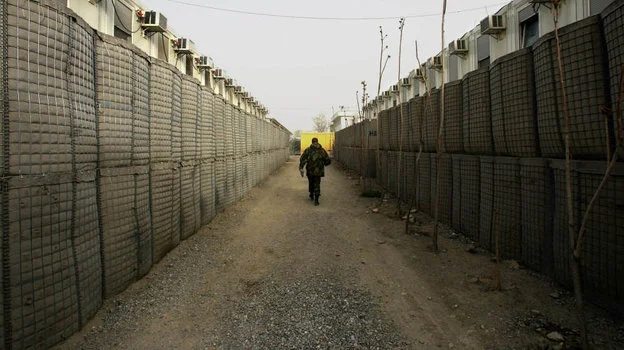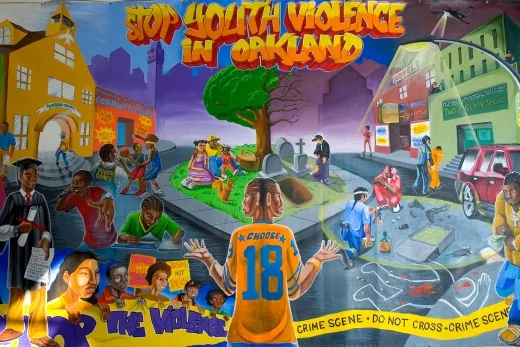Dublin is a city of juxtaposition. And perhaps city-ness is nothing more than a multiplicity of juxtaposition in form and function. But as it reimagines its past and rebrands its future as authentic, Dublin gives this truism some shape.
During our summer research with the Annenberg Scholars Program in Culture and Communication and the National University of Ireland Maynooth, we grappled with the prevailing forces shaping Dublin’s realities. In particular, we reckoned with what David Harvey identified as an emergent but dominant mode of urban governance: entrepreneurialism [1]. The city as enterprise. The city as facilitator and partner. The city as both place and place-maker. What was the relationship between “the political economy of place and the cultural politics of place” [2]?How did the contingencies of Dublin – the city and the city-brand – and Ireland – the nation and the national imaginary – shape the city government’s entrepreneurial endeavors?
Attending the Dublin City Council's StartUp City charrette, we began to see how the city's ongoing transformations and internal tensions were etched into the built environment. The event, in which teams variously comprised of city officials, urban designers, hackers, and entrepreneurs presented proposals for improving city support for small to medium-sized enterprises, was located in the City Council's Wood Quay offices along the River Liffey. Once there, we found ourselves in the City Wall Room, an immense conference space in the office building's basement, named for the Viking-built wall undergoing archaeological excavation at the time of the site’s construction – the wall that lay dormant behind the speakers, their Prezis, their future-motifs. Not only were Dublin’s deep past (as Viking settlement) and immediate future (as an entrepreneurial e-city) juxtaposed in this ethnographic moment, so too were the specters of its more recent history – a history of vast public campaigns to halt construction, a history of voices extinguished, of democracy, public space, and urban identity in doubt.


One StartUp City team focused on encouraging street markets by streamlining the bureaucracy for establishing new hubs. While officials and developers see these hubs as catalysts for entrepreneurship, urban livability, and local investment, commitment to existing markets was waning. The sites of extant locales have increasingly become targets for large-scale development projects that cater to the ongoing hope for middle-class influx.
Hopping between these market hubs, we saw an abundance of forms, styles, and purposes: from the sidewalk vendors in the Liberties selling cell phones, toilet paper, toys, batteries, and watches, angry with the City Council for doubling their stall fees; to the Temple Bar Food Market and Cow’s Lane Designer Market, where gourmet fare is hocked upscale tourists and locals and is carefully managed by the city’s Temple Bar Cultural Trust; and the Ballymun Farmer’s Market, inside a new but failed shopping mall in a northern suburb dominated by social housing.

In a subtle yet striking juxtaposition, two types of markets emerged after the Celtic Tiger crash: sprawling, outer-city car boot sales and curated, inner-city flea markets. In poorer suburbs, car boot sales attract hundreds of vendors and thousands of visitors. Furnishings, appliances, toys, and jewelry sell for a couple of Euros. Vendors pay a small fee to set up shop, their wares laid out on a table or blanket as they chat with friends nearby, bargain with shoppers, or peruse cars arrayed in rows, face-to-face, boot open. Vendors are usually under- or unemployed, and the sale is only one of their many informal trades.
Meanwhile, the inner-city’s flea markets cater to a younger, hipper crowd, selling homemade and vintage jewelry, vinyls, antique furniture, old fashionable clothing, and art. A founder of the Dublin Flea believes that this new interest in markets is partly a shedding of the middle-class fear of being associated with peasant culture. City Council representative Siobhan Maher, on the other hand, imagines it a tourism amenity: “visiting people want to find the quirky stuff.” Perhaps the street market presents a variety of opportunities for what Sharon Zukin calls “shopping for authenticity” [3]: a few extra dollars for vendors and for the government, a way to encourage individual entrepreneurship at a low risk, and a way to validate authenticity through consumption.

But authenticity can be an elusive siren. And the quest for it dictates much of urban governmental action. Cities seeking to foster authentic built environments and a creative material personality must make concessions; the role of government must be transformed. The City Council, wary of its own preponderance, strives to become a facilitator of authentic creativity and urban place-making.
Channels are thus created for the sourcing of citizen input at the front-end of development. The Studio, an “interdisciplinary” branch of City Council founded after the economic crisis, looks for “new ways to engage with the public that are less formal [and] less officious.” The hyper-localized urban connaissance of what it means to be a resident of Dublin, on x street in y neighborhood, becomes the currency of city officials. New rituals and frameworks for public engagement are enacted. The Dublin City Beta Project transforms the city into a “test-bed” for seemingly radical, citizen-sourced design concepts to improve street life. Citizens become users of the city-as-product, and the entrepreneurial city knows what its users want.
The Digital Dublin Master Plan and Dublin City Public Realm Strategy each project an image of perfected, open city-ness, in which consumers of city-space provide constant input to the City Council in real time, a feedback effect that risks being construed as a substitute for democracy. These newly-minted initiatives are aspects of an explicit imperative to “open” the city – to make big data available, open source, for developers and citizens. The open city extends beyond the digital and into the public realm, where clever “hacks” of public space are now praised and promoted by city officials. Reports like these are mechanisms of power, not because they shape the future, but because they coordinate “a shared belief in the future” in the present [4].
In Dublin, city of juxtaposition, these techniques call attention to themselves. Public spaces are no longer the physical and social domain of the commons but “a key part of the city’s identity and distinctive character [whose] quality affects the city’s competitiveness and ability to attract investment.” Smart, open, transparent, walkable, consumable cities. The imperative is to spatialize a city-image attractive to consumers of urban authenticity. What comes into relief, however, is not a city trying to improve the conditions within its territory, but an enterprise with the singular objective of competing with its global peers in attracting capital.
Aaron Shapiro and Emily Ladue are doctoral students at the Annenberg School for Communication at the University of Pennsylvania. Aaron studies cities, intellectual technologies of urban revitalization, and commodity aesthetics. In particular, he is interested in urban design and planning as spatial techniques of government. He can be contacted at ashapiro@asc.upenn.edu. Emily is studying urban development, dispossession, and consumption in US cities. She is also a filmmaker looking to express this research through video projects. Her email is eladue@asc.upenn.edu.

















